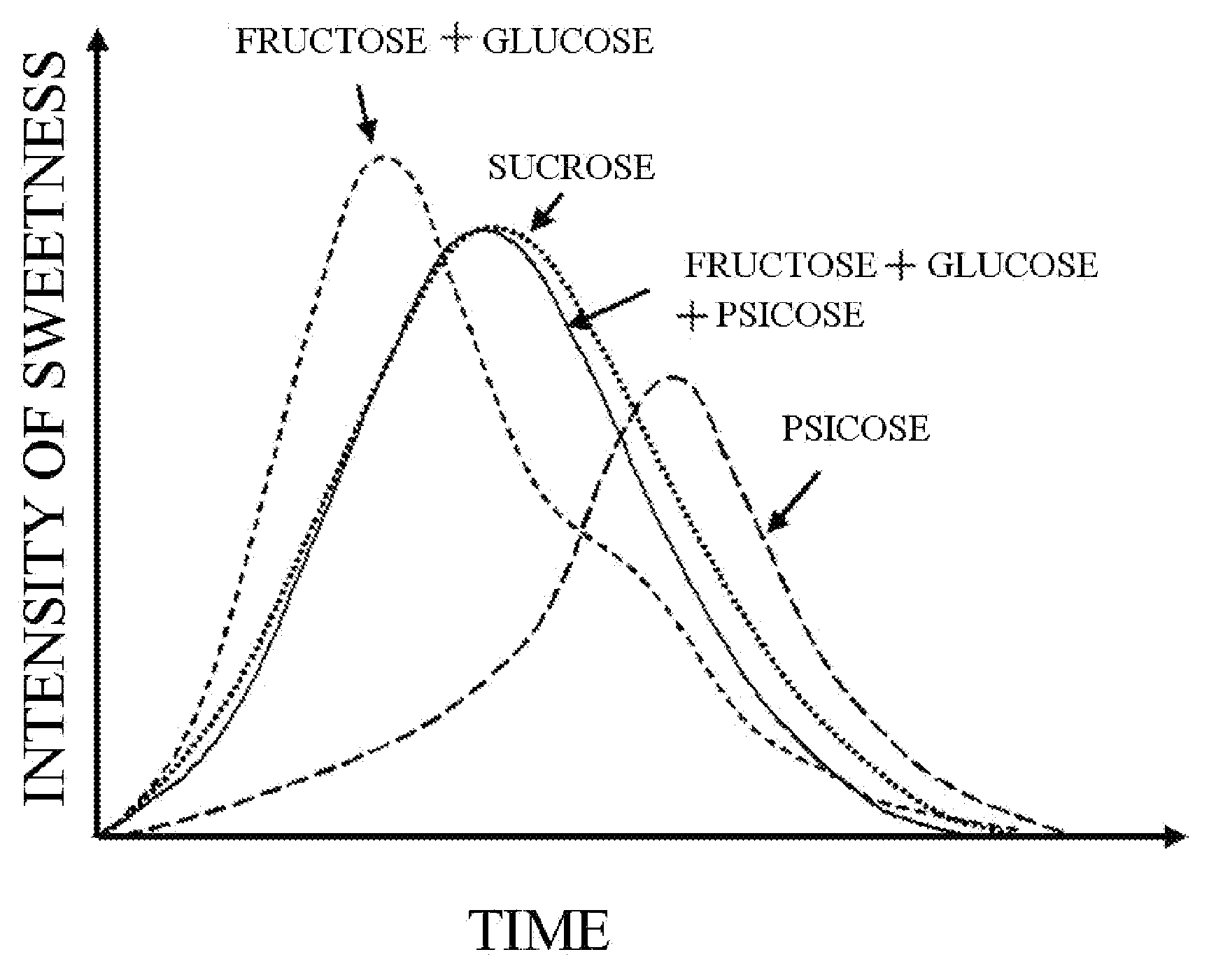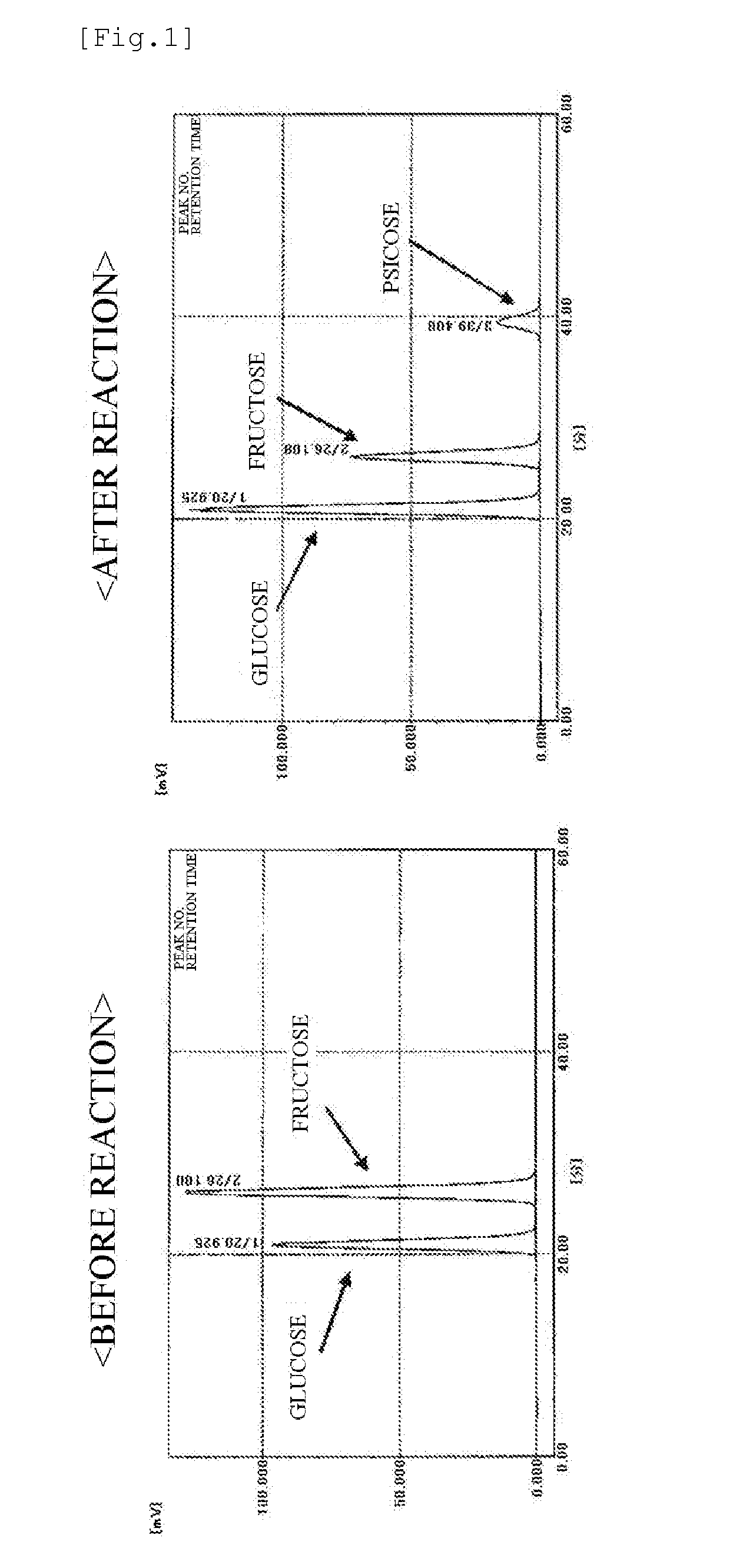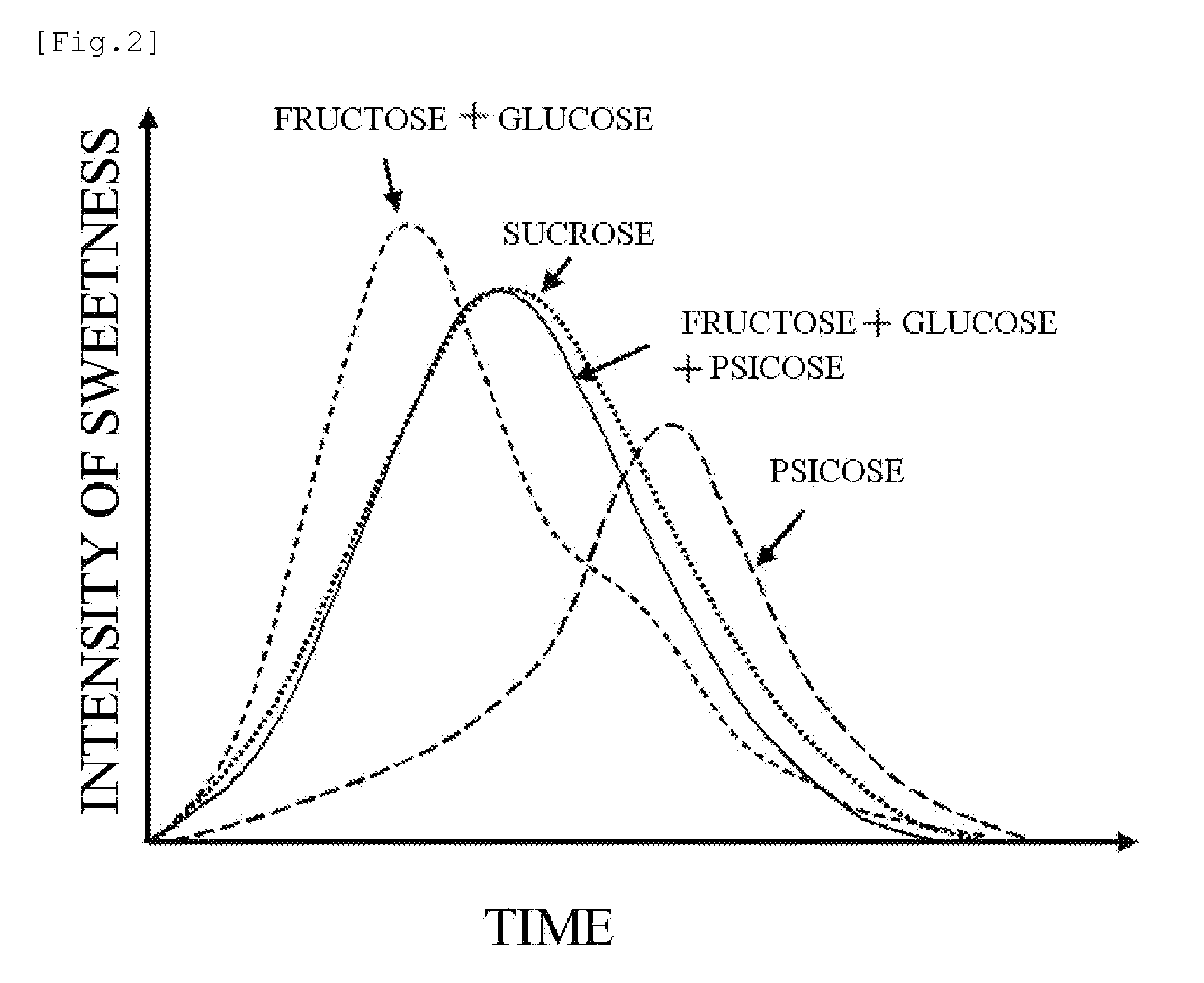Novel sweetener having sucrose-like taste, method for producing the same, and use of the same
a technology of sucrose and sweetener, which is applied in the field of new sweetener having sucroselike taste, method for producing the same, and use of the same, can solve the problems of unsatisfactory results and extremely difficult industrial mass production of d-psicose, and achieve the effects of improving the taste of d-psicose, and reducing the risk of cancer
- Summary
- Abstract
- Description
- Claims
- Application Information
AI Technical Summary
Benefits of technology
Problems solved by technology
Method used
Image
Examples
example 1
Preparation of Sugar Solution Containing D-Fructose, D-Glucose, and D-Psicose
(1) Method Using a Continuous Plant
[0081]Water and α-amylase (from Bacillus lichenifomis) were added to starch, and degradation was caused at approximately 95° C. After the completion of liquefaction, the mixture was cooled to 55° C. Glucoamylase (from Chalara paradoxa) was added to cause further degradation, and a glucose solution was thus produced. The obtained glucose liquid sugar was poured into a column with immobilized glucose isomerase (from Bacillus coagulans) at 60° C., and isomerized sugar was thus produced. As a D-ketohexose 3-epimerase, D-tagatose 3-epimerase (from genus Pseudomonas) was used. Preparation of the enzyme and measurement of the enzyme activity were performed according to a patent document (JP-A-2001-11090), etc. That is, a 50 mM Tris-HCl buffer containing an isomerized sugar solution (10% (w / v), containing D-fructose) was poured into a column packed with Chitopearl beads BCW2503 (m...
example 2
Sensory Testing of Sugar Solution Containing D-Fructose, D-Glucose, and D-Psicose
[0087]Several 10% (w / v) sugar solutions having D-fructose and / or D-glucose and / or D-psicose at various ratios were prepared, and subjected to taste testing by nine panelists. For evaluation of sweetness, the panelists were asked to select “light”, “same”, or “heavy” in comparison with a sugar solution having the same degree of sweetness as that of sucrose and also with sucrose. The number of panelists who selected each option was determined. The results of the sensory testing are shown in Table 1. The panelists were nine men and women in their twenties to thirties having a good sense of taste.
TABLE 1Results of sensory testing of sugar solutionABCDEFGHIJKLMNProportionFructose010203034405055556070809055of sugars (%)Glucose:psicose (1:1)100908070605040302010Glucose60153545Psicose63010Degree of sweetness01045677554523Quality ofLight89733324233135sweetnessSame10266575535413Heavy00000100231451
[0088]The degree...
example 3
Preparation of Acidic Beverage Containing D-Fructose, D-glucose, and D-psicose
[0091]Beverages each containing the novel sweetener or sucrose were prepared according to the formulation shown in Table 2.
TABLE 2ProportionD-fructose3.9D-glucose4.8D-psicose1.3Sucrose10Citric acid0.10.1Flavoring0.10.1Carbonic acid5050WaterTo make 100To make 100
[0092]As a result, both the obtained beverages had almost the same, pleasant degree and quality of sweetness.
PUM
| Property | Measurement | Unit |
|---|---|---|
| Percent by mass | aaaaa | aaaaa |
| Percent by mass | aaaaa | aaaaa |
| Percent by mass | aaaaa | aaaaa |
Abstract
Description
Claims
Application Information
 Login to View More
Login to View More - R&D
- Intellectual Property
- Life Sciences
- Materials
- Tech Scout
- Unparalleled Data Quality
- Higher Quality Content
- 60% Fewer Hallucinations
Browse by: Latest US Patents, China's latest patents, Technical Efficacy Thesaurus, Application Domain, Technology Topic, Popular Technical Reports.
© 2025 PatSnap. All rights reserved.Legal|Privacy policy|Modern Slavery Act Transparency Statement|Sitemap|About US| Contact US: help@patsnap.com



